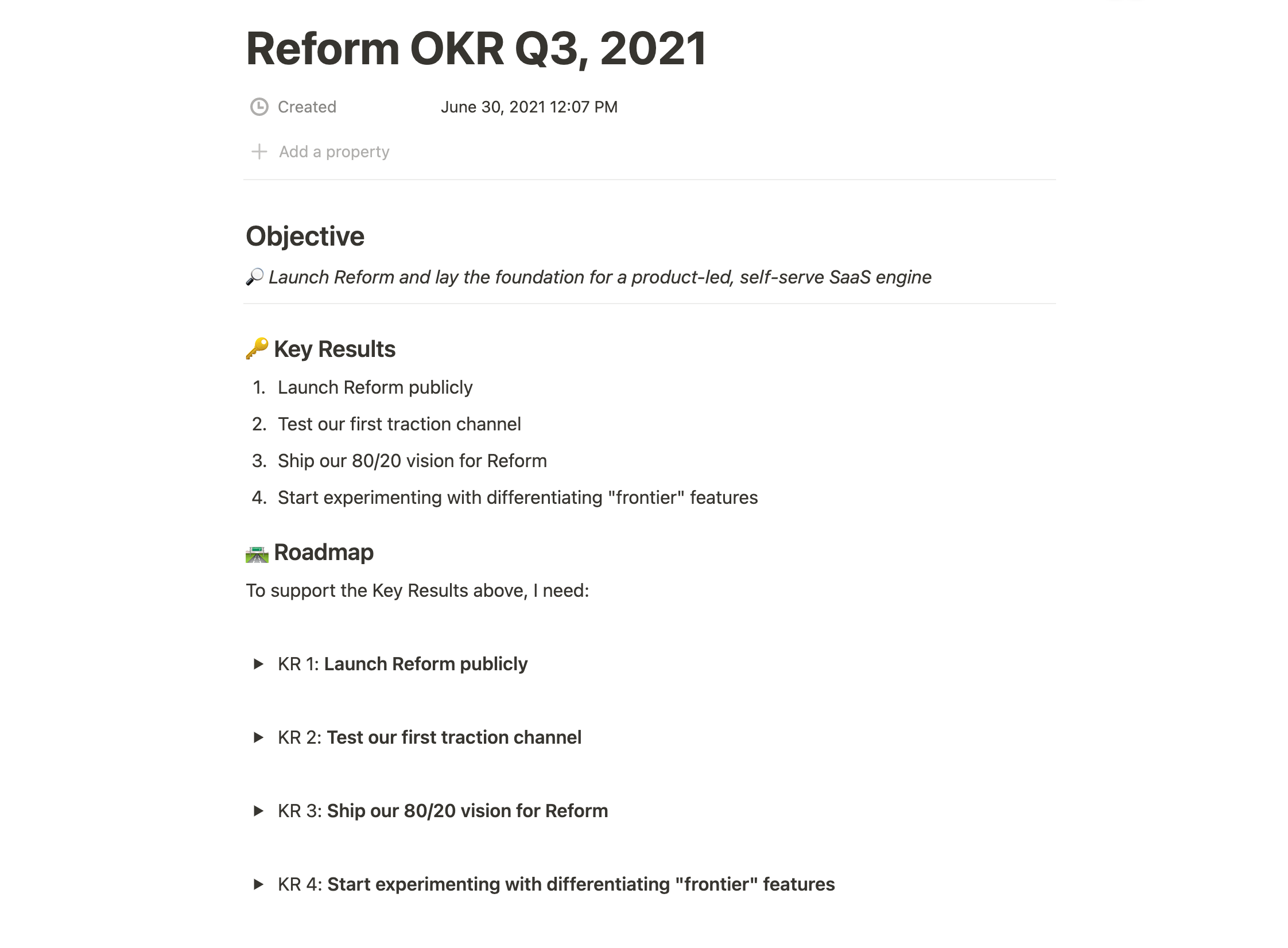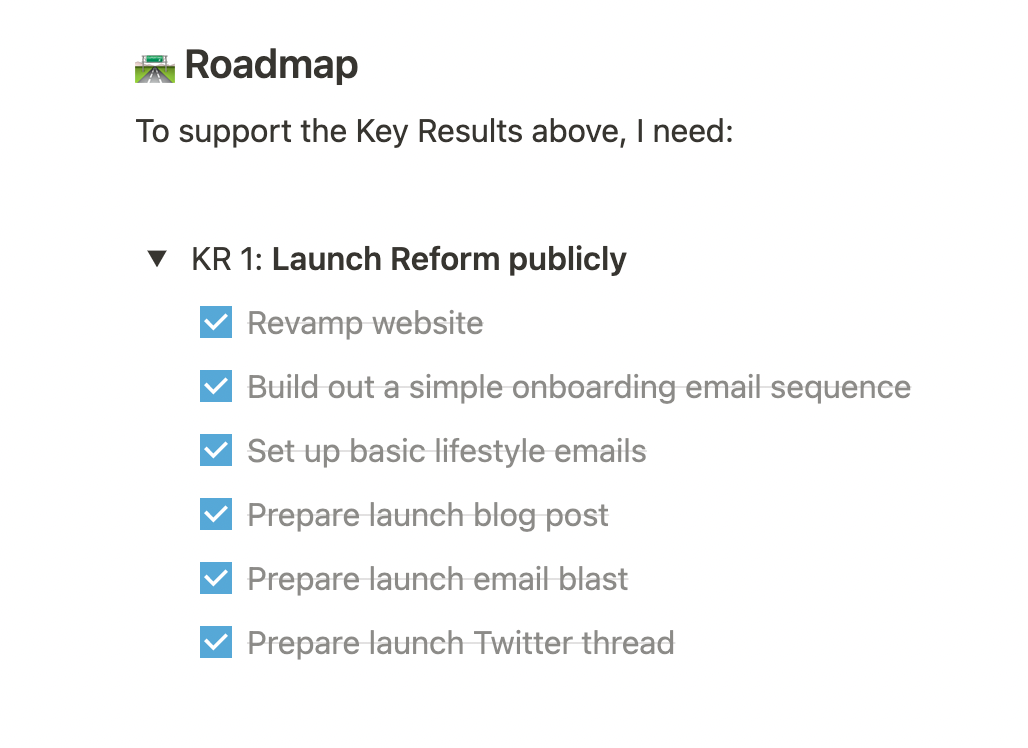How I use OKR to plan my indie startup
In this article, I want to share how I use OKRs (Objectives and Key Results) to run my startup, Reform (a form builder you should check out if you run your own business). I've been doing it for more than two years now, and I don't know how I'd get anything done without it. I'm a developer, and the OKR methodology is the operating system I build my plans on. Before each quarter, I "develop" a new OKR plan and hit "run". It's awesome.
Preface: I'm not an expert on OKRs. I've skimmed John Doerr's Measure What Matters, but this is all based on my own practical experience running a 2-person startup. I got into OKRs because of my good friend Matt Wensing (whose product Summit you should also check out if you run a business). He showed me his process, and I've stuck with it for two years now. Thank you, Matt!
What are OKRs?
OKR stands for Objectives and Key Results and helps break a big goal into smaller, more actionable chunks. However, I don't want to write a whole bunch about the theory behind it (because I don't know it LOL). I want to show, not tell. OKR is pretty magical when you first try it. So let's skip the theory for now.
Reform's OKR plan for Q3 2021
The best way to show you what OKR looks like for me is to walk through an actual plan. So here's how our OKR plan for Reform's Q3 look:

Even though there are many fancy tools that can help manage OKRs, we just use Notion. I'm sure those tools are handy when you're more than two people, but for us, Notion is perfect. This template is 100% copied from Matt, as I mentioned earlier. Thanks again, Matt!
Start with the objective
It all starts with my objective for the quarter. Once the objective is defined, I can work backward to figure out what needs to get done. But how do you figure out what the objective should be?
When Matt introduced me to OKR and helped me plan Q3 2019, he asked me, "when you sip your mulled wine for Christmas (it's a big deal here in Denmark) and look back at the quarter, what would make you feel really good about where things are at?". Or at least something like that. That was a helpful thought experiment. Your objective needs to be ambitious and feel exciting. Otherwise, there's no way you're going to stick with it. I say "you", but I mean "I".
When I wrote our Q3 plan, I was so tired of not having launched yet. I didn't want to send another early access invite. I just wanted to launch. I wanted to be able to look ahead and move on. Make long-term plans etc. So the thing that got me excited was to launch and lay a solid foundation for a self-serve SaaS that we could build upon in the coming quarters. You know, do marketing and stuff like that.
Don't worry about how to get there. Yet.
Break it down to key results
Once you have your objective, everything gets a lot easier. The next step is to define the key results. Key results should be measurable. This is important because, if done correctly, the key results will tell you if you've achieved your objective or not. You need to be able to score yourself on the key results (I never do, don't tell Matt).
So the way I go from objective to key results is by asking, "what needs to be true before I can honestly say I've achieved this objective?" The principles here are pretty straightforward, but it takes some work since this is where I do my actual planning.
This quarter, most of the objective is actually achieved by the first key result, which is to launch the darn thing, and the third, which was to "finish" our product. A lot of the self-serve SaaS stuff is a blocker to launching. The remaining two key results are a bit more forward-looking. There is actually a fifth secret key result that I decided to leave out of this post (and we're making progress on it). The objective could probably have been defined better, but, you know, it got us through the quarter. And we launched!
Turn it into actions
The final step is to take your key results and turn them into actions. Essentially a to-do list for each key result. This is what makes OKR so awesome. You end up with:
- Well defined to-do items to execute on
- That maps directly to a key result
- That explicitly helps you achieve your objective
What this means in practice, at least for me, is that I don't need to question my work every single day. I know what to do and why. I know that if I do X, I make progress on Y key result that helps me achieve Z objective.
Here's what that looked like for launching Reform:

It's not rocket science, but it gets the job done!
And that's all there is to it. If you have any questions or comments, let me know on Twitter.
Good luck! 🙏
Pssst! If you need a form for something, check out Reform.